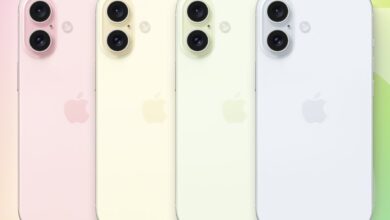Apple Unveils iOS 26 at WWDC 2025: A Revolutionary Redesign with “Liquid Glass” and Enhanced AI

Cupertino : At its annual Worldwide Developers Conference (WWDC) 2025, Apple introduced iOS 26, marking a significant milestone in the evolution of its iPhone operating system. Described as the most substantial design overhaul since iOS 7 in 2013, iOS 26 introduces a striking new “Liquid Glass” design language, enhanced Apple Intelligence features, and a rebranded naming convention that aligns with the calendar year. With a developer beta available immediately, a public beta set for July, and a full rollout planned for September alongside the iPhone 17 launch, iOS 26 promises to redefine the iPhone user experience. Here’s an in-depth look at what’s new, what’s changed, and what it means for Apple users worldwide.
A Bold New Look: The “Liquid Glass” Design
The centerpiece of iOS 26 is the “Liquid Glass” design, a visual refresh that Apple claims will shape the next decade of its software ecosystem. Inspired by the translucent aesthetics of visionOS for the Apple Vision Pro, this design language introduces glass-like transparency, specular highlights, and motion-based effects across the iPhone’s interface. App icons, buttons, notifications, widgets, and control panels now feature a glossy, translucent finish that dynamically reacts to light and movement, creating a sense of depth and immersion.
The Home Screen and Lock Screen have been reimagined to incorporate this aesthetic, with menus adapting to the rounded corners of iPhone hardware and notifications featuring translucent backgrounds for a sleek, modern look. Apple’s Senior Vice President of Software Engineering, Craig Federighi, emphasized during the WWDC keynote that the “Liquid Glass” design is not just cosmetic but aims to create a cohesive experience across Apple’s ecosystem, including iPadOS 26, macOS 26 (Tahoe), watchOS 26, tvOS 26, visionOS 26, and CarPlay. This unified approach ensures that users experience a consistent interface whether they’re on an iPhone, iPad, Mac, or Apple Watch.
However, the bold redesign has sparked mixed reactions. Some netizens have praised the futuristic aesthetic, while others have expressed skepticism, with posts on X suggesting that “Steve Jobs would have fired everyone” for such a dramatic shift. The design’s emphasis on transparency and motion may take some getting used to, but Apple is betting on its ability to captivate users with its fluidity and elegance.
However, the bold redesign has sparked mixed reactions. Some netizens have praised the futuristic aesthetic, while others have expressed skepticism, with posts on X suggesting that “Steve Jobs would have fired everyone” for such a dramatic shift. The design’s emphasis on transparency and motion may take some getting used to, but Apple is betting on its ability to captivate users with its fluidity and elegance.
Rebranding to iOS 26: A New Naming Convention
In a surprising move, Apple has abandoned its sequential naming scheme (e.g., iOS 18, iOS 19) in favor of a year-based convention. Instead of iOS 19, the 2025 release is dubbed iOS 26, reflecting the year following its introduction (2025-2026). This change aligns all of Apple’s operating systems—iOS, iPadOS, watchOS, tvOS, and visionOS—with the same version number, “26,” except for macOS, which retains its California-inspired name, macOS Tahoe 26. According to Apple, this shift mirrors how car manufacturers assign model years and aims to simplify versioning for users. The next major release in 2026 will be iOS 27, and so on.
This rebranding, first hinted at by Bloomberg’s Mark Gurman in a post on X, has been met with curiosity and some confusion. While it streamlines Apple’s ecosystem, it marks a departure from a tradition that began with the first iPhone. The change underscores Apple’s focus on forward-looking innovation, positioning iOS 26 as a foundation for future updates.
Apple Intelligence: Smarter, More Integrated AI
Apple Intelligence, introduced at WWDC 2024, takes a significant leap forward in iOS 26 with new privacy-focused AI features and third-party integrations. The update builds on existing capabilities like Genmoji and Image Playground, allowing users to mix emoji, Genmoji, and text descriptions to create custom visuals. A new “Visual Intelligence” feature enhances the Camera app, enabling users to search the web for objects or items (like a green jacket) directly from their screen, rivaling Google’s Circle to Search.
The Phone app now includes Live Translation, which uses AI to translate text messages and FaceTime captions in real time across multiple languages. Additionally, Apple has opened its on-device AI model to third-party developers through the Foundational Models Framework, enabling apps like AllTrails and Kahoot to integrate conversational AI features. For example, AllTrails users can now search for hikes with specific criteria, such as “a nearby family hike under three miles with waterfalls.”
A new AI-powered feature, Workout Buddy, acts as a virtual health coach, leveraging data from the Health app to provide real-time motivation during workouts, such as tracking pace and distance. While Apple Intelligence is expanding, it remains exclusive to devices with sufficient processing power, such as the iPhone 11 and newer models, and is not yet available in all countries or languages.
App Updates: Phone, Messages, Camera, and a New Games Hub
iOS 26 brings significant updates to core apps, enhancing functionality and user experience:
Phone App: The Phone app has been simplified with a unified view for favorite contacts, recent calls, and voicemails. New features like Call Screening and Hold Assist aim to streamline communication, making it easier to manage calls on the go.
Messages App: Users can now create polls in group chats, with Apple Intelligence suggesting when a poll might be useful. Group chats also feature typing indicators, and users can set custom background images for conversations. The ability to merge two emoji with Genmoji adds a playful element to messaging.
Camera App: The Camera app has been streamlined for easier navigation, with enhanced Visual Intelligence for image-based web searches.
Photos, Music, and News: These apps have received design updates to align with the Liquid Glass aesthetic, making them more immersive and content-focused. The Photos app, in particular, reintroduces tabs for Library and Collections, improving organization.
Apple Games: A new pre-installed Games app serves as a hub for gaming, offering group features and integration with Apple Arcade. This move reflects Apple’s growing emphasis on gaming as a core iPhone experience.
Wallet App: A new feature allows users to manage autofill credit cards directly in the Wallet app, a boon for frequent online shoppers.
Availability and Device Support
The iOS 26 developer beta is available starting June 10, 2025, through the Apple Developer Program at developer.apple.com. A public beta will launch in July, allowing non-developers to test the update. The full rollout is scheduled for September 2025, coinciding with the iPhone 17 launch. iOS 26 supports iPhone 11 and newer models, ensuring broad compatibility but leaving older devices like the iPhone XS behind.




